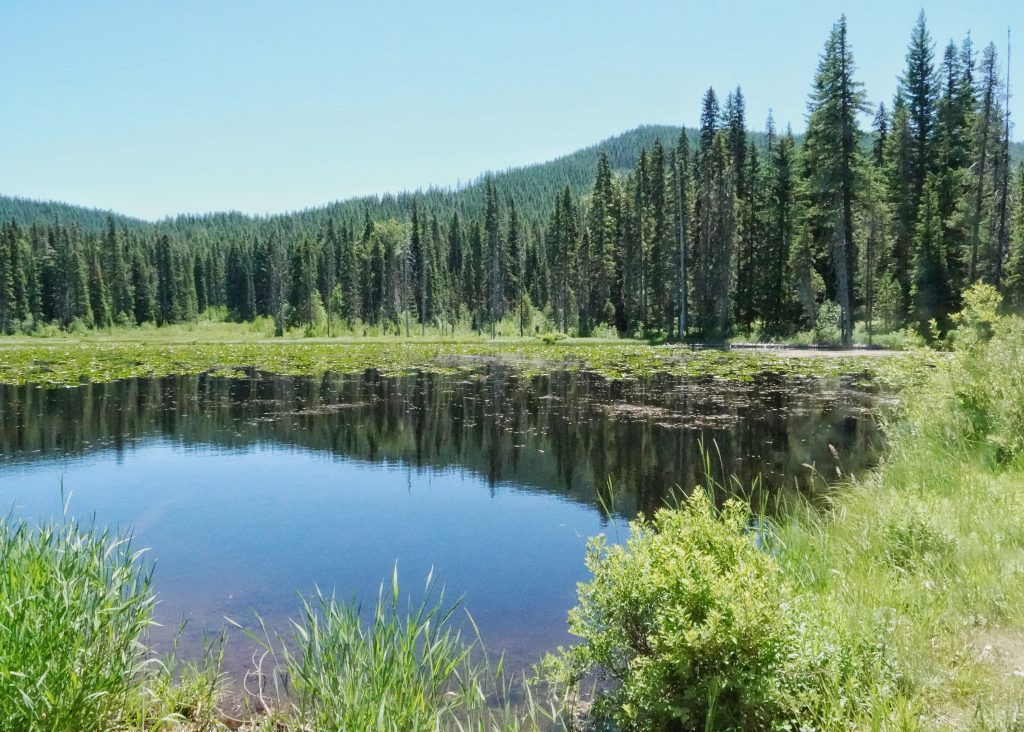
The breeze I encountered when I got back to the South Prairie area after leaving Lost Creek promised a welcome respite from the mosquitoes. At the north head of South Prairie is South Prairie Lake, a year around body of water with masses of the native pond lily Nuphar polysepala . It appears to be a natural lake, contained in a bowl by the surrounding hillsides, but despite the depth of water right offshore, it is possible that it was formed, or at least augmented, by the building of the road on its southwest flank. Regardless, it is a beautiful mountain lake, and it sometimes has a fantastic number of dragonflies. Alas, this was not one of those days, and I suspect that the blessed breeze that was keeping the mosquitoes away and which was occasionally gusting fairly hard, had pushed many of them into leeward harbors. But I did find a couple Libellula quadrimaculata ( Four-spotted Skimmer), and a few American emeralds (Cordulia shurtleffii) allowed me to net and photograph them.
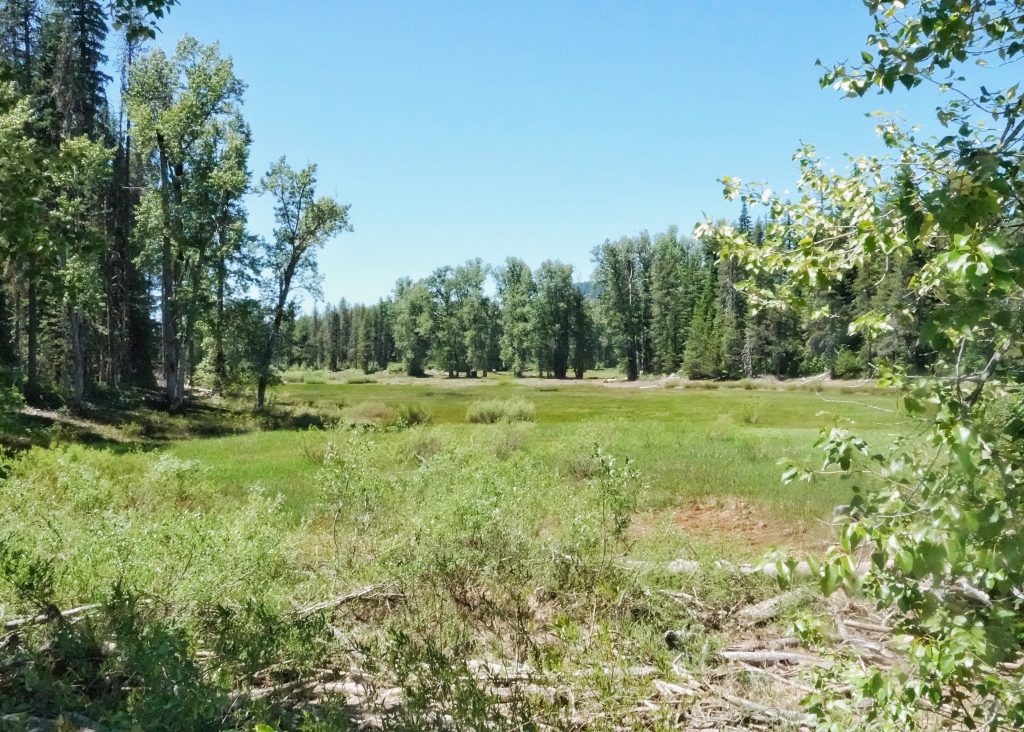
What that shoreline lacked in numbers of dragonflies it made up for with damselflies. There were hundreds of what I (and many others in the community of enthusiasts of Odonata) call No/Bos, because northern bluets (Enallagma annexum) and boreal bluets (E. boreale) are virtually indistinguishable unless you have them in hand to examine the appendages, and they’re no piece of cake even then. But they are both pretty distinctive amongst bluets, if one can see them clearly, because the front 2/3 of the abdomen is mostly blue. They mostly stayed out amongst the lily pads, but even when they came close I wasn’t tempted to net one, because I’m satisfied to call them No/Bos and watch them go about their business, these little blue living, flying lines contrasting nicely with the dark water and green vegetation.
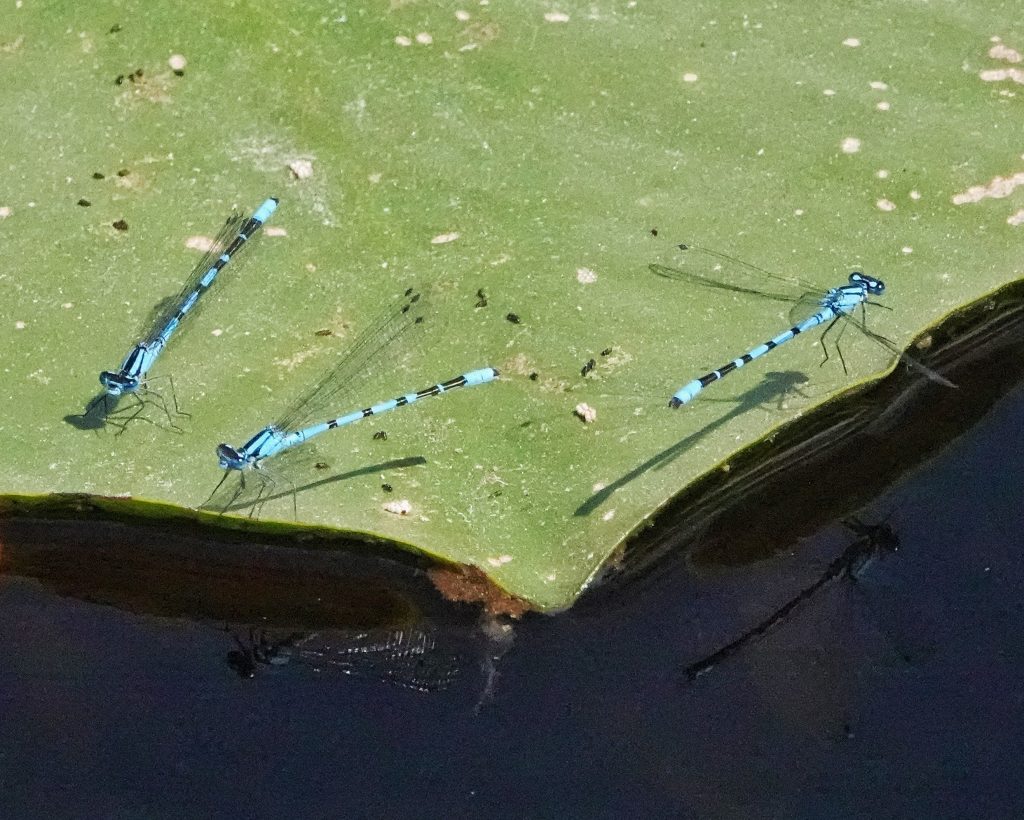
There were also quite a few tattered mourning cloaks patrolling the lake shore, crisscrossing the road, and sometimes perching on its surface, but I failed to get more than a couple decent photos of them, probably because my photography skills were not up to managing the glare of the roadbed against their dark velvet wings, and in my photos the distinctive cream colored wing margins were not at all distinct against that backdrop. This was yet another in a long line of failures to get adequate photos of mourning cloaks, made even more galling by the fact that the dozen+ specimens I saw that day were more than I’ve ever observed on a single outing before, and more were perched than I usually see in an entire season. Fortunately I was under the illusion that I had finally garnered useful pics of mourning cloaks, so that the disappointment I later felt upon editing those photos did not color the experience of that day. But I still struggle not to let it cast a pall over the memories of that glorious day, and I wonder if I’ll ever learn not to focus on the failures, rather than the successes.
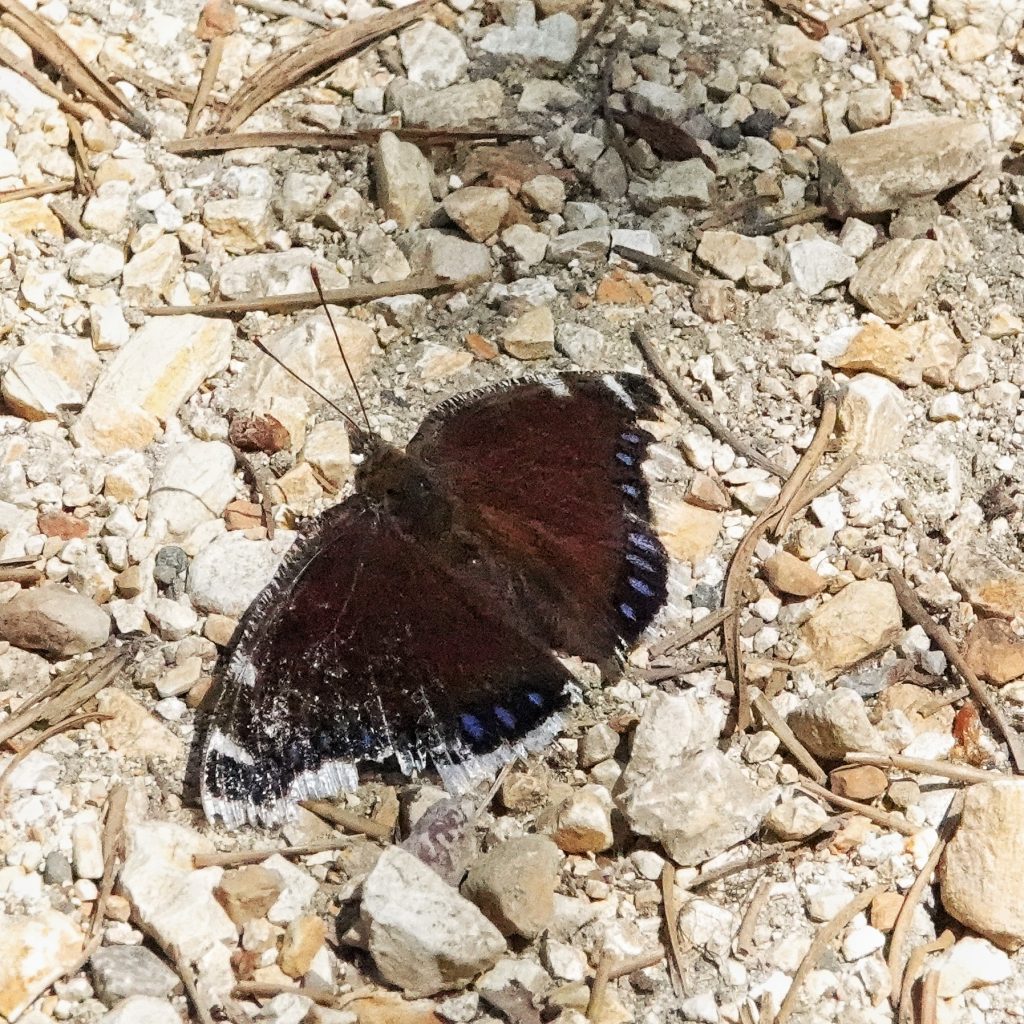
Next I made my way to a bog in the area, where hillside runoff collects is a basin without an outlet, and where sphagnum mosses have colonized the perimeter to the point where what looks like solid ground is often masses of past generations (called peat) of these mosses suspended in and atop the water column. (For a good overview of bogs in general see the National Geographic treatment at bog). The ‘ground’ becomes progressively more spongy as one approaches open water (technically called a ‘quaking bog’), and while these floating masses of plants will, at least temporarily, support the weight of a human (though if you stand in a given spot for any length of time you will find yourself, inch by inch, sinking into the bog), there are often pockets where the underlying vegetation has sloughed off, and people die every year of drowning bogs, because once you go through it’s easy to get tangled in the subsurface vegetation, as well as the fact that there is nothing solid to grab to allow one to pull themselves out of the water.
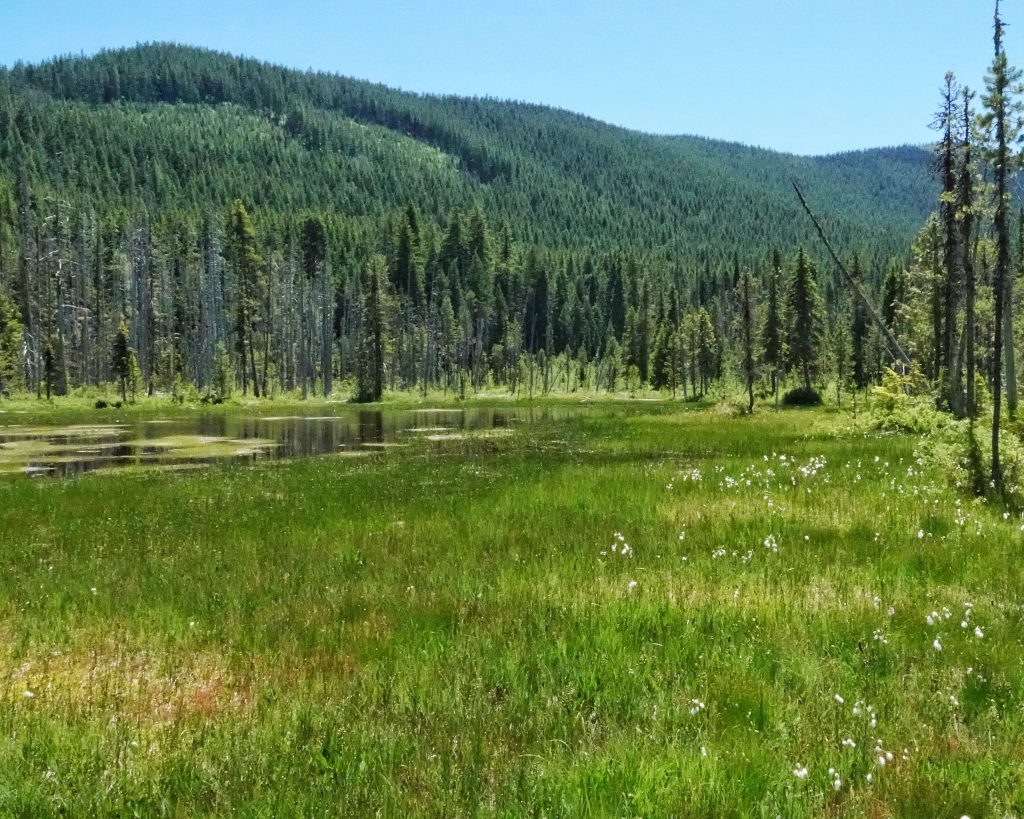
But if a modicum of caution is taken, bogs can be wonderful places, with an astonishing number of interesting, albeit often very small, organisms. Even from a standing position it’s hard to see the intricacies at your feet, and being on hands and knees better allows one to enter their world (although, as I said, you will sink slowly into the bog, and I nearly immersed the phone in my pocket on this trip because the water was warm and the descent so gradual). I should also mention that the plants in a bog are delicate, and can be destroyed by carelessness or excessive numbers of disturbances (which is why I’m not giving the exact location of this bog), but that because the surface is spongy, and the plants are already sitting in very damp conditions, they are somewhat more resilient to being trodden upon than those of a regular meadow.
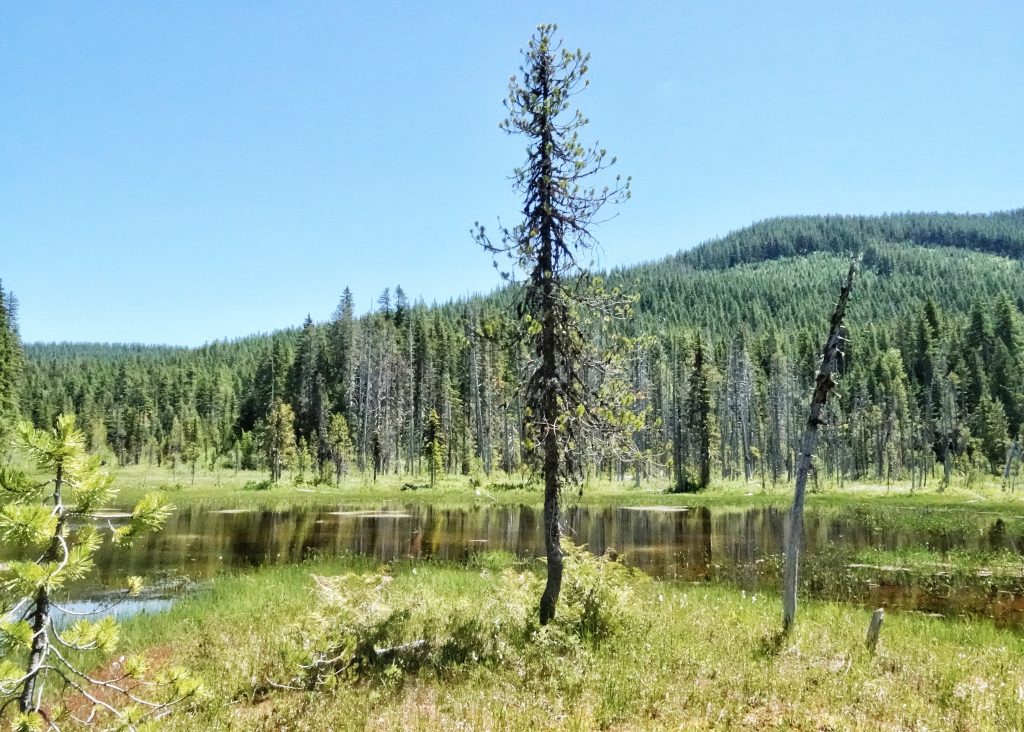
Bogs in general, and especially montane bogs, tend to be quite beautiful places, although there is always at least a hint of melancholy wrought by the dead trees that inevitably line their shores. In the essay “The Red Sneaker”, Robin Wall Kimmerer writes, “The ring of trees at the perimeter walls off the bog from the rest of the forest. The circle of Sphagnum glows green like a firefly against the dark wall of spruce. Here, the seen and the unseen worlds our elders speak of coexist in close proximity, the sunlit surface of the bog and the dark depths of the pond. There is more here than meets the eye…Every bit of ground in a bog is blanketed in Sphagnum. Actually, it’s not ground at all. It’s only water, cleverly held by the architecture of moss. I am walking on water, on a mat of Sphagnum moss that lies over the surface of the pond. Some of the pool is still visible at the center of the bog, a flat dark surface. Bog ponds are unusually still and glassy. The dark water draws your eyes downward, in search of the unseen. No current disrupts the reflections of summer clouds…The water is clear, stained the color of root beer with humid and tannic acids released from the slow decay of Sphagnum.” (From “Gathering Mosses”; 2003)
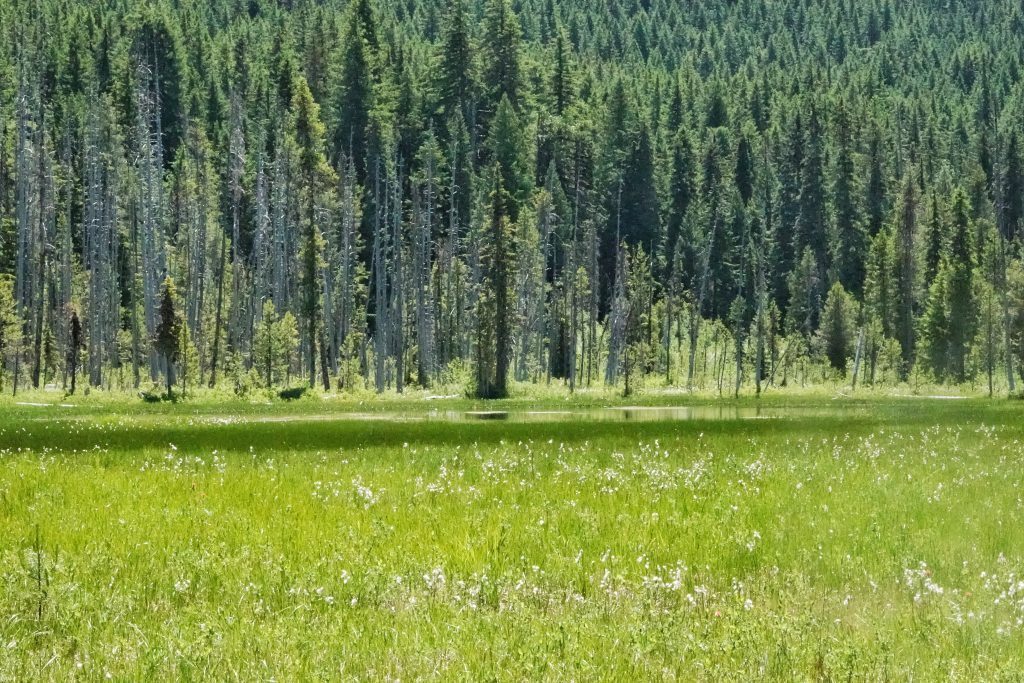
Because they are continually damp, at least slightly acidic, and the bulk of the nitrogen and other minerals are tied up in the peat in complex molecules that most plants can’t use, bogs have some very specialized plants, including dozens of species of Spagnum, members of Ericaceae and Orchidacea which have complex mycorrhizal relationships, and carnivorous plants like sundew that trap insects and digest them for their nutrients. In addition to finding members of those 4 groups I also found buckbean (Menyanthes trifoliata), tinker’s penny (Hypericum anagalloides), and Arctic starflower (Lysinachia europea) in the bog itself, and slender paintbrush (Castilleja miniata) in the slightly drier, grassy margins, as well as my first Western red damselflies (Amphiagrion abbreviatum). They were several other odonates flying around, including some whitefaces and some darners, but I wasn’t able to capture any of them for identification.
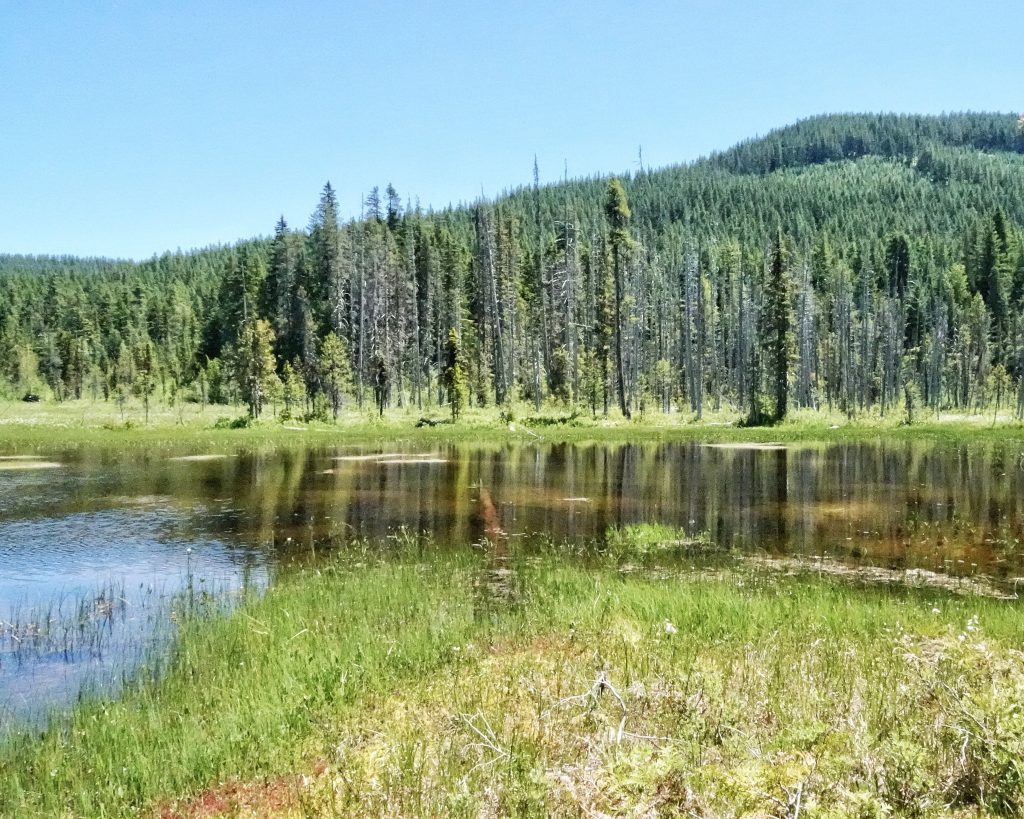
The day was winding down so I tore myself away from this wonderful bog and made my way back through the forest to my van. But this time I noticed dozens of the elegant white flowered bead lilies (Clintonia uniflora), which I’d never photographed in bloom (although I do have some photos of the brilliant blue fruits), and had missed on the way in because they were tucked in among the white flowers of Cornus unalaschkensis (Western Bunchberry) and Columbia windflower Anemone deltoidea. But almost immediately, having sweated off whatever protection the deet may have offered, the hordes of bloodsucking female mosquitoes (only the females require blood, and it is used to nourish their eggs-male mosquitoes sip nectar rather than blood) that had left me alone whilst prowling about the open and windswept bog, descended on me in force. Since I didn’t have to think, just hold the camera steady, I persevered until I had plenty of photos for a profile, despite seeing dozens of the little buggers on my hands and arms. Then I walked as quickly as I could back to the road, and finally outpacing them, hustled into my van and slammed the door before they could gain entry.
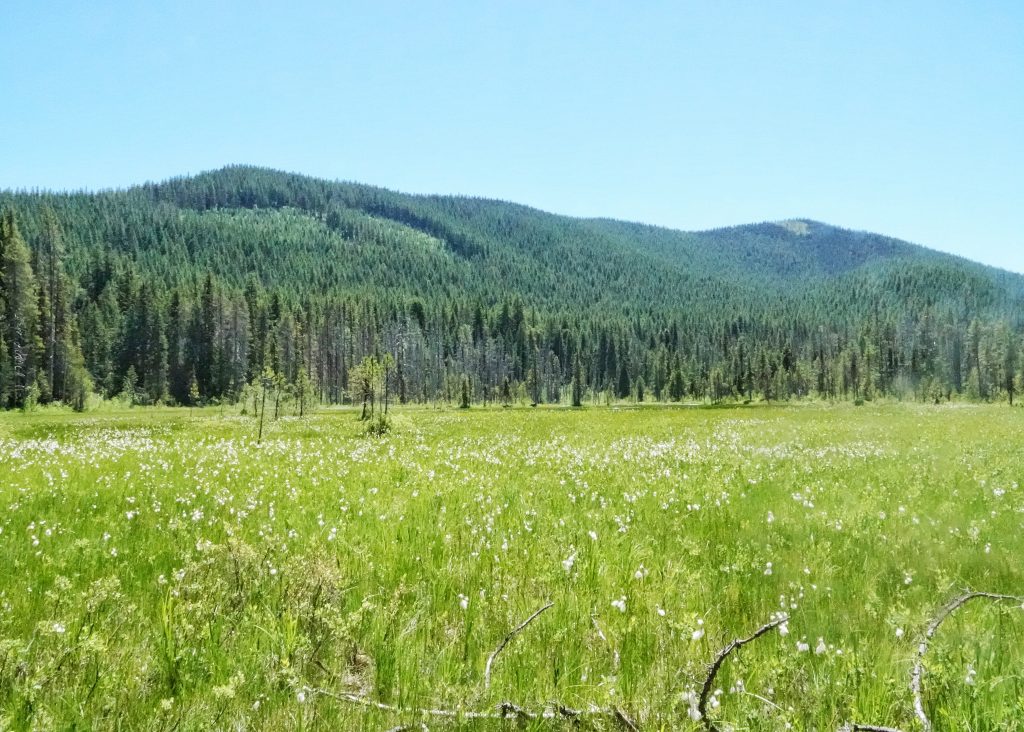
I found it interesting that virtually all the plants you described in the article on bogs, are plants that use bacteria to fix Nitrogen, are symbiotic with fungi that can handle organic nitrogen, or just eat it in the form of fresh meat.
Yes it is! I will be talking about that when I profile each plants.
What you call a bog, I have been taught is a fen albeit with a quaking mat. You might look into the difference between a big and a fen.
I did so for this blog, Kathy. What I found said that a bog is dominated by moss, whereas a fen is dominated by graminoids. Do you have different information?
Okay, that information may have been wrong, because I just found 3 places that say that a bog is fed only by rainwater and runoff, whereas a fen is fed by a stream or spring. I still think this was a bog, because there was no watercourse running into it, but it may have been spring fed.